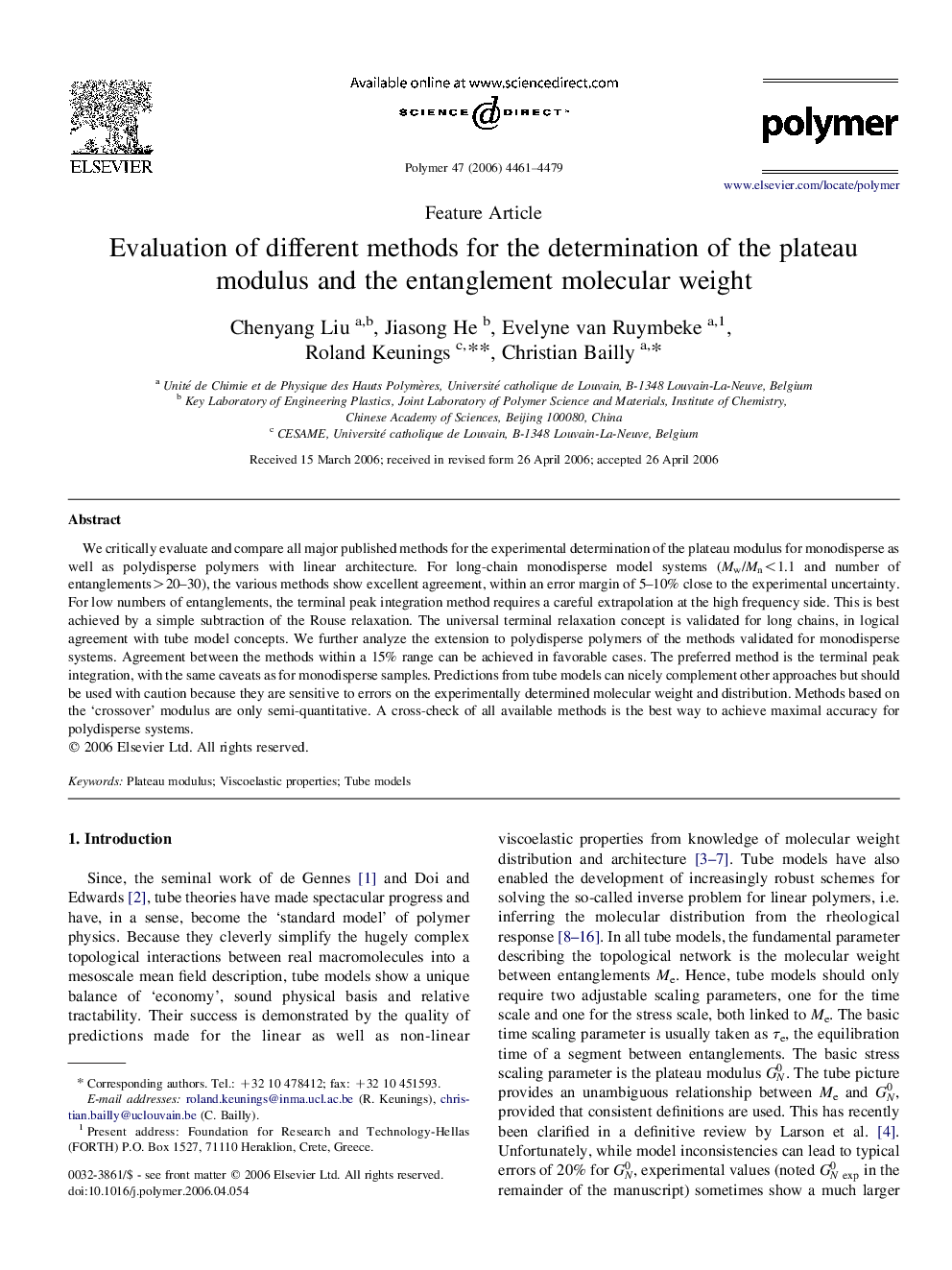| Article ID | Journal | Published Year | Pages | File Type |
|---|---|---|---|---|
| 5189482 | Polymer | 2006 | 19 Pages |
Abstract
We critically evaluate and compare all major published methods for the experimental determination of the plateau modulus for monodisperse as well as polydisperse polymers with linear architecture. For long-chain monodisperse model systems (Mw/Mn<1.1 and number of entanglements>20-30), the various methods show excellent agreement, within an error margin of 5-10% close to the experimental uncertainty. For low numbers of entanglements, the terminal peak integration method requires a careful extrapolation at the high frequency side. This is best achieved by a simple subtraction of the Rouse relaxation. The universal terminal relaxation concept is validated for long chains, in logical agreement with tube model concepts. We further analyze the extension to polydisperse polymers of the methods validated for monodisperse systems. Agreement between the methods within a 15% range can be achieved in favorable cases. The preferred method is the terminal peak integration, with the same caveats as for monodisperse samples. Predictions from tube models can nicely complement other approaches but should be used with caution because they are sensitive to errors on the experimentally determined molecular weight and distribution. Methods based on the 'crossover' modulus are only semi-quantitative. A cross-check of all available methods is the best way to achieve maximal accuracy for polydisperse systems.
Related Topics
Physical Sciences and Engineering
Chemistry
Organic Chemistry
Authors
Chenyang Liu, Jiasong He, Evelyne van Ruymbeke, Roland Keunings, Christian Bailly,
